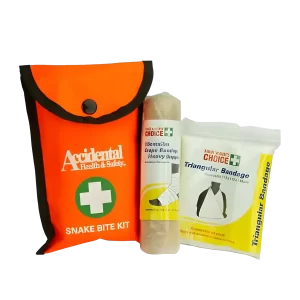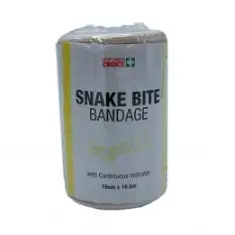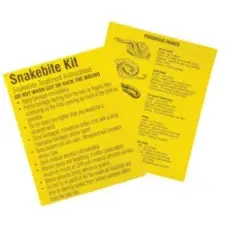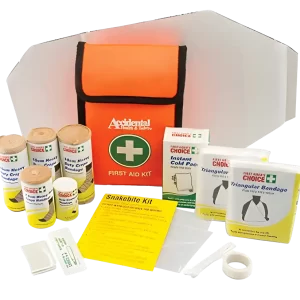Training and Assessment Delivered on Behalf of Allens Training Pty Ltd RTO 90909
Snake Bite First Aid Hub
09/07/2024 We’ve added even more to our snake bite hub. We’ve got great new articles sub articles that help you get a deeper understanding of snake bites. They’ll be throughout the article but you can also check them out here.
Main Page – Snake Bite First Aid Hub
Common Questions – Navigating Australia’s Venomous Snakes
Proper Technique – Snake Bite: Proper Technique
Snakebite Bandages – Snake Bite Bandages
Snakebite Kit – Snake Bite Kit Contents
Tourniquet Use – Does a Tourniquet Help with Snake Bite?
Welcome to our Snake Bite First Aid Hub.
In it you’ll learn what actually happens when a person is bitten by a snake, how to treat it, where to find snake bite kit’s and also find valuable additional posts that explore the in’s and outs of snakebite.
How do you feel about snakes? Most of us hate them, some of us don’t mind them, some people keep them as pets (I don’t know why). Regardless of how we feel about snakes, we know that in a land with many poisonous snakes, a snakebite is a concern.
No need to panic though. did you know that if you are bitten, Australia is one of the best places to be. Our country has great snakebite first aid techniques and hospital care. Only 2-3 people die each year from snakebite in Australia, compared to more than 25,000 in sub-Saharan Africa.
So with some good knowledge of how to give snakebite first aid, there is an extremely high chance you will live! But so many people don’t know the proper techniques. In this article we will learn how to give good first aid and discuss a few interesting facts about advanced healthcare.
Snake Bite First Aid
Ok, so you can skip ahead if you want to see the steps of the technique. But first, let’s get a bit of a better understanding of the ideas that underpin the technique.
When you get bitten by a snake, where does the venom go? Contrary to common belief, venom doesn’t enter your bloodstream immediately. Think about it, have you ever had a doctor try to find a vein to draw blood. It takes effort, accuracy, and depth. A snake cant do that!
So where does venom go? Initially it enters into your bodies lymphatic system. It’s a system of vessels, node’s and ducts that deal with excess fluids in your body. Unlike blood, the lymphatic system doesn’t have a pump. It circulates through muscle and body movement.
Here’s how good first aid helps. If you bandage up the affected limb, you can slow the poisons movement through the body. This slows the venom from going deeper into your body and buys you more time to get lifesaving antivenom. What’s the right way to do this, and what are some common myths you might want to avoid?
How to treat Snake Bite?
The most important thing you can learn is a method called Pressure Immobilisation technique. In most first aid snakebite kits, you’ll find some heavy duty crepe bandages. These bandages can slow down the lymphatic system giving you more time to get to a hospital and get lifesaving antivenom. Here are a few of our snakebite kits or bandages.
-
 Basic Snake Bite First Aid Kit$11.66 including GST
Basic Snake Bite First Aid Kit$11.66 including GST -
 Snake Bite Bandage 10cm x 10.5m$11.36 including GST
Snake Bite Bandage 10cm x 10.5m$11.36 including GST -
 Snake Bite Instructions Sheet$1.98 including GST
Snake Bite Instructions Sheet$1.98 including GST -
 Snake/Insect Bite First Aid Kit$57.67 including GST
Snake/Insect Bite First Aid Kit$57.67 including GST
But how do you actually use all this gear to help someone. If you have a snakebite kit with multiple bandages here’s what you do: using a crepe bandage, wrap from a bit above the bite site to two to three inches below. Keep wrapping until the roll is used. With the other crepe bandages, roll from the bottom of the limb to the top. (Why do you go from bottom to top? Here’s why)
In some kits there will only be one big bandage, if that’s the case roll it firmly from the bottom of the limb to the top.
Apply enough pressure to clamp down on the muscle, but not enough to stop circulation.

Important Step: Reduce Movement
Ok, so the other thing to keep in mind is body movement. You’ve slowed the flow of the lymphatic system by bandaging the arm, that’s great. But other movement can still speed up the circulation of the lymphatic system. For instance, walking, running, pretty much just moving in general. If someone is distressed, it will be hard for them to stay still.
So what can you do? You can help reduce movement by splinting. There are many types of splints available, so we won’t go into too much detail on this, but basically they immobilise or stop any additional arm movement. If a splint isn’t available you could even use a stick and tape it to the leg or arm to stop them bending or moving it.
You’ll also want to be calm and reassuring to reduce movement. Encourage them to take deliberate, deep breaths. Also, be mindful of getting the patient to walk. Only get them to walk if absolutely necessary, it’s far better to have emergency services or transportation come to them.
The first nations Jaanga people, knew the importance of reduced movement. When bitten by a snake, they would lie completely still under a tree for 4 to 5 days while people brought them food and water. Many survived.
Emergency Care for Snake Bites
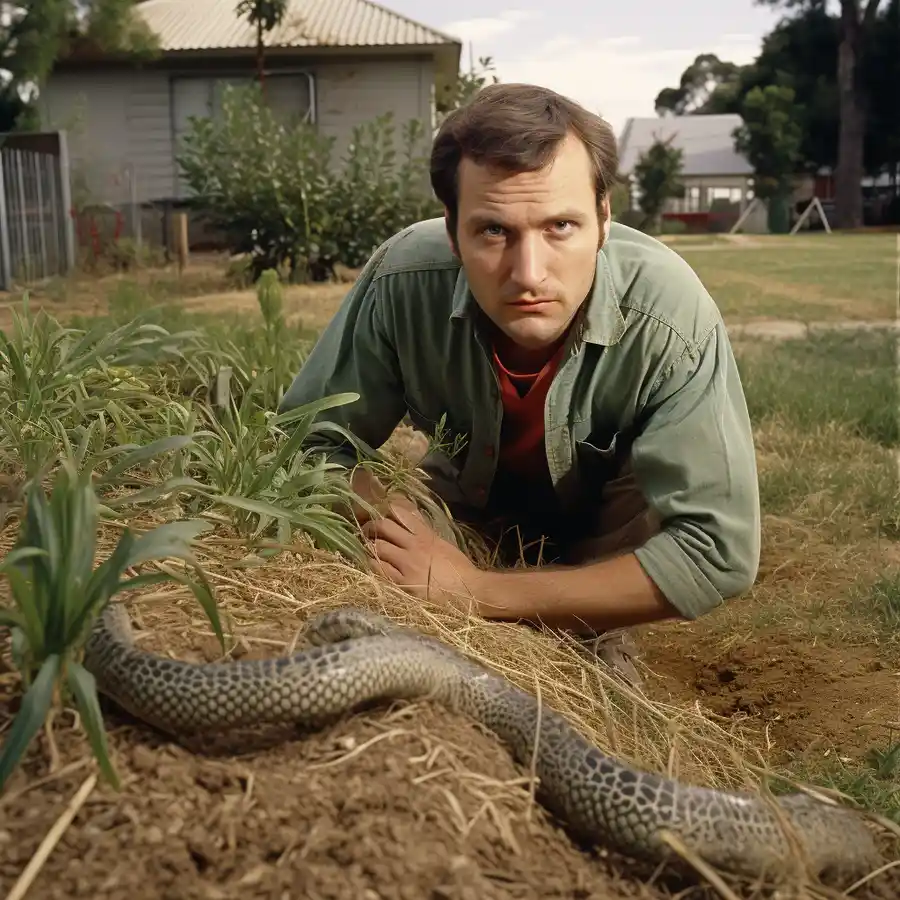
You likely know it’s good to call an Ambulance immediately. We just want to pop in a reminder not to have a she’ll be right mate attitude.
We had one local example: During one of our first aid courses we heard a story where a person was bushwalking. While walking, they saw a snake and felt something on their leg. Initially, they thought they might just have brushed up against a stick. But, they knew the procedure and called emergency services anyway. What happened? When swabbed by medical professional’s, venom was found
Remember: the rare snake bite deaths have been caused by not picking up on the bite or the severity of the situation early.
What Not To Do
Ok, so we’ve learnt what to do, now lets talk about what not to do.
Don’t Wash the Venom Off.
Why not? If you wash the venom off, medical professional’s won’t be able to identify it. You should leave venom on the body. Medical professional’s will be able to identify what type of snake you have been bitten by and apply the right antivenom quicker.
Don’t Suck it Out.
Sucking venom out can leave you exposed to toxins and infections that could hurt you. Also, it’s very unlikely you’ll be able to suck all that venom out.
Don’t Catch the Snake
Have you ever heard myths such as “you need to identify the snake for them to find the right antivenom” or, have you heard “there are only two types of antivenom and we have to guess the right one.” The fact is that medical professionals can swab the bite site to find what snake bit you and then find the right antivenom for you. Don’t put yourself in danger trying to find the snake.
Anaphylaxis and Snake Bites
We all know that guy that’s allergic to seafood, or a kid that can’t go near peanuts. That’s anaphylaxis, where the bodies immune system overreacts and floods itself with chemicals causing the body to go into shock and and swelling.
So fun fact, or not so fun fact. When someone has a snake bite, not only can the venom damage them, but they can have an anaphylactic reaction to the snakebite.
How would you know if someone was having an anaphylatic reaction to a snake bite? There would be swelling or tightness in the throat, faintness, wheezing, a hoarse voice or difficulty talking and breathing. Also these symptoms would come on quite soon after the bite.
What can you do? Treat anaphylaxis like normal, with an epi-pen if one is available. If not epi-pen is available, let emergency services know and do the best you can.

What if you get bitten on the body?
We learnt before how to immobilise a limb. What happens if you get bitten on the body. Australian guidelines recommend getting emergency services help as soon as possible. Applying direct pressure from your arms may help. Thankfully, most snakebites occur on the limbs and not the body.
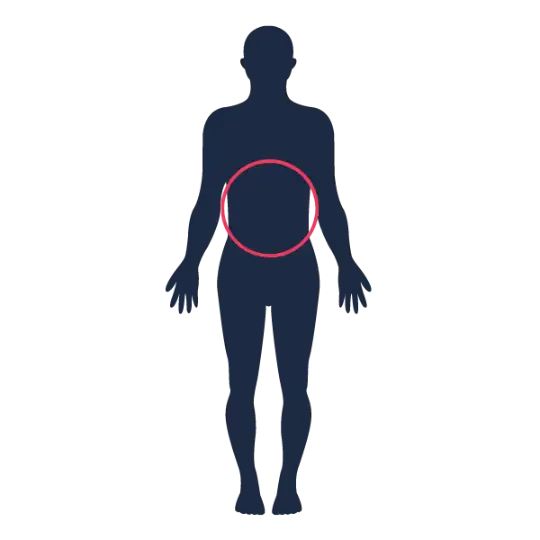

Do people in Toowoomba know how to do a snakebite bandage?
In this video I went out on the street to see how many people knew the proper technique.
Conclusion
So let’s recap. If there’s a snakebite, it’s no death sentence! Use the right bandaging technique and limit movement. Get emergency services in as soon as possible. We’d love to help you try this hands on.


